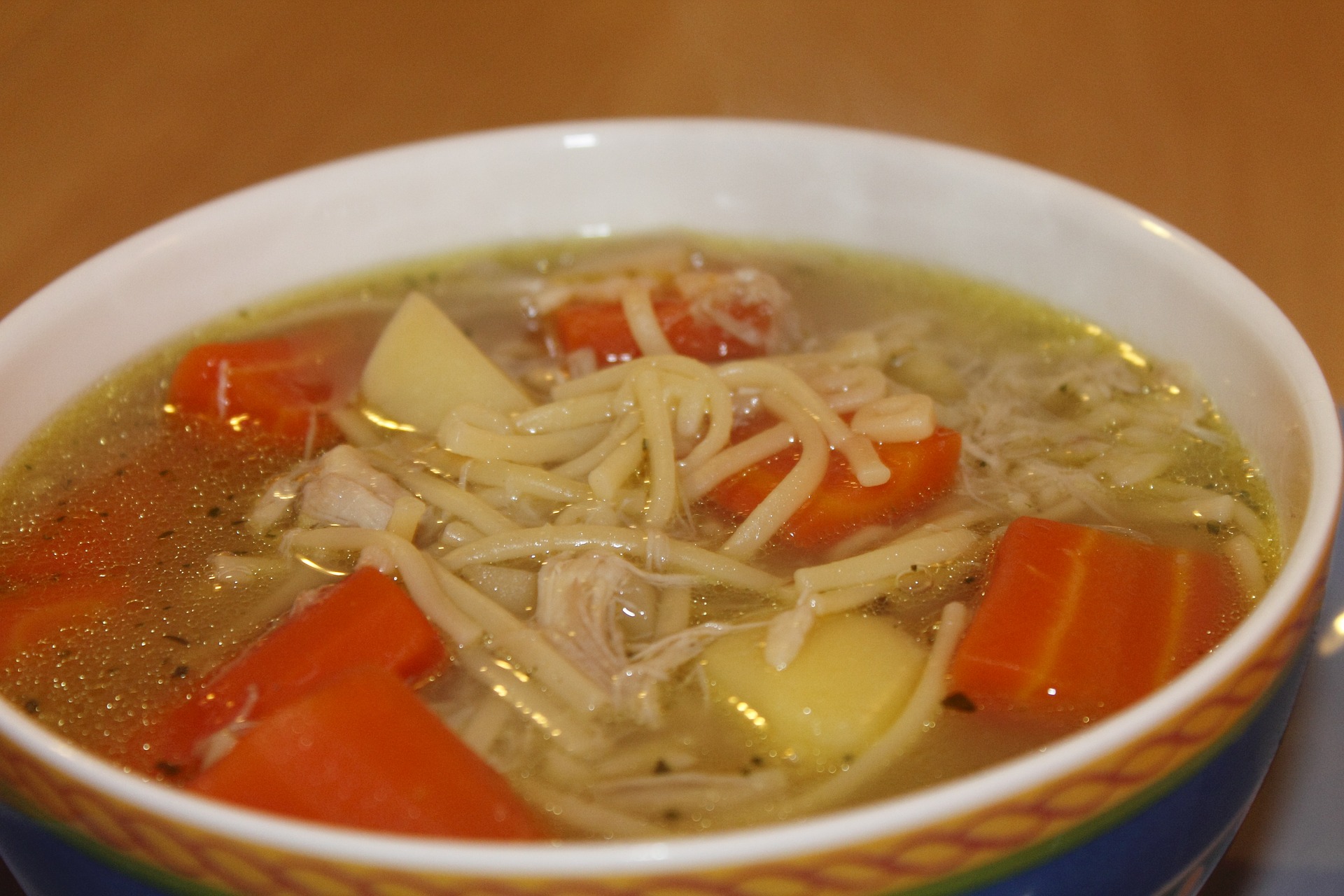Both chicken soup and noodle soup have been around for centuries, but it was Campbell’s who really brought the two together, culminating in the now famous chicken noodle soup.
But the name itself was an accident.
Chicken soup:
We can thank the ancient Greeks for the combination of chicken and broth. Ancient physicians and philosophers believed chicken soup cured everything from bed wetting to leprosy.
Although many have tried to pinpoint exactly how chicken soup works as a medicinal food item, the healing powers still remain largely a mystery.
A doctor named Stephen Rennard famously studied the curative powers of chicken soup in the early 1990s, based on his grandmother’s recipe (which did not have noodles in it), and he definitely came up with best results to date so far, which you can read about here.
Noodle soup:
Noodles have been partnered with broth-based soups as early as the 1200s in Asia. Beginning in the 1700s in Italy, folks began feeding noodle soup to the sick because it was easy to digest. By the 1900s in the US, noodle soups had become a staple convenience food.
As we can see, both chicken soup and noodle soup separately have their curative elements, so it was only a matter of time that they came together like peanut butter and jelly.
Chicken noodle soup:
Specifically, in 1934 Campbell’s “Noodle with Chicken Soup” debuted, thanks to creator Ernest Lacoutiere, a chef at the Campbell’s company. Although the soup did well immediately, it prospered even more after its name change.
Just five years after its introduction, a radio host accidentally called the food item “Chicken Noodle Soup” and people went nuts. Reportedly, consumers flocked to the grocery store shelves to try out this “new” soup.
Side note: Campbell’s is also credited with the invention of the green bean casserole.
Surprisingly, Campbell’s chicken noodle soup still does well today, in a day and age where many people are making their own soups and stews at home. It has sustained a “Top 10 shelf-stable grocery item” title since its origin, and additionally, in 2013 the company reported sales of 200 million cans of chicken noodle soup.
I personally am surprised at the success it’s had, for the aforementioned reason of less people eating canned soup. (If they only knew how much sodium was in canned soup in general…well, that’s another topic.)
Admittedly, I use Campbell’s condensed soups often in cooking – Cream of Chicken and Cream of Mushroom for casseroles, and I put their tomato soup in meatloaf. But canned chicken noodle soup is typically something eaten on its own, not in conjunction with something else, in which case I’d rather just make my own.
Apparently, not everyone agrees.
Perhaps part of the reason why Campbell’s Chicken Noodle Soup has retained its popularity over the years is because it is considered highly kid friendly – much like how many kids love boxed Kraft mac and cheese with its fake orange powder over the real thing.
Also, to credit Campbell’s, Dr. Rennard’s chicken soup experiments did find that even canned chicken soup can contain the healing properties that homemade can.
One thing is for sure: Campbell’s put the combination of chicken and noodles in a soup on the map.
Do you like your chicken soup with or without the noodles?
Personally, I like noodles, but I prefer egg noodles, not the broken spaghetti type that is utilized by Campbell’s.

Comments
One response to “Food history: chicken noodle soup”
I love chiein noddle soup